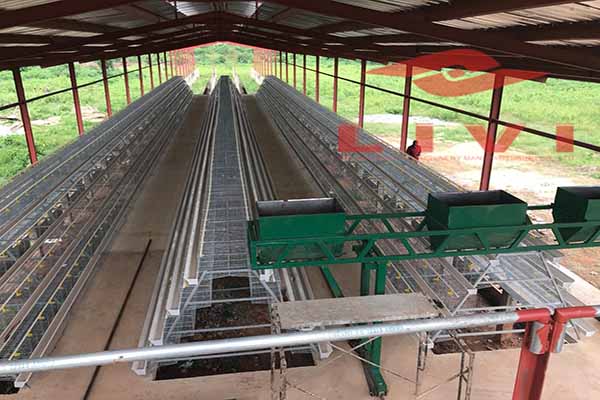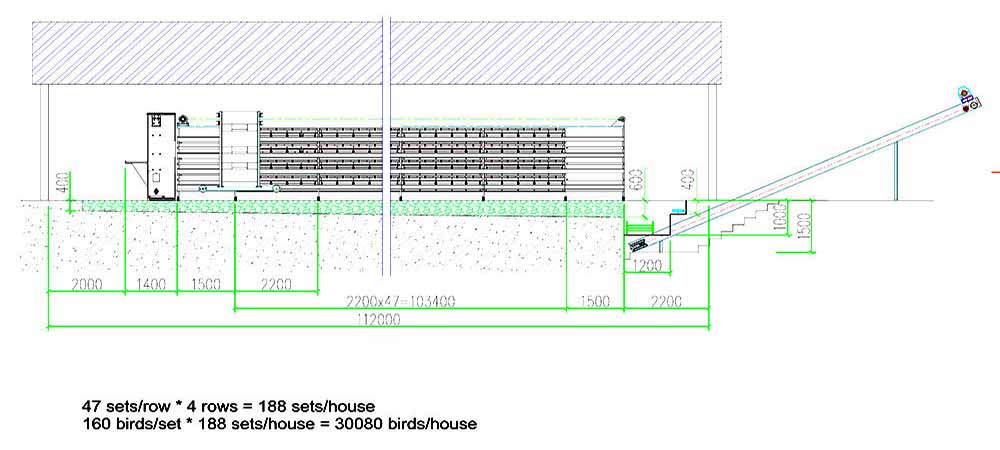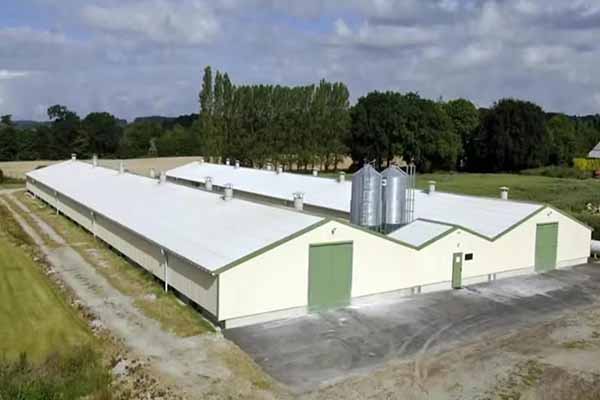China Broiler Auto-Cage System: Revolutionizing Poultry Farming Efficiency
Time : 2025-06-27
The auto-cage system has emerged as a game-changer in the poultry farming industry, particularly for broiler production. In China, the adoption of this technology has been significant, leading to increased efficiency and productivity. This article delves into the details of the China broiler auto-cage system, its benefits, components, and the role it plays in modern poultry farming.
Introduction to Auto-Cage Systems
Auto-cage systems are innovative equipment designed to facilitate the efficient management of broiler chickens. These systems are typically automated, reducing the manual labor required in poultry farming and improving overall productivity. The auto-cage system consists of various components that work together to ensure the health and well-being of the birds, as well as optimize farming operations.

Benefits of the China Broiler Auto-Cage System
Implementing an auto-cage system in broiler production offers several key benefits:

- Increased Productivity: The automation of feeding, drinking, and waste removal processes allows for consistent and efficient management, leading to higher production rates.
- Improved Bird Health: The controlled environment minimizes the risk of disease outbreaks and ensures that birds receive proper nutrition and hydration.
- Reduced Labor Costs: The elimination of manual tasks reduces the need for a large workforce, lowering labor costs for farmers.
- Enhanced Biosecurity: The enclosed system limits the exposure of birds to external contaminants, such as pests and diseases.
- Resource Efficiency: Auto-cage systems are designed to minimize water and feed waste, contributing to more sustainable farming practices.
Components of the China Broiler Auto-Cage System
The China broiler auto-cage system is a sophisticated piece of equipment, comprising several essential components:
China broiler auto-cage system is a sophisticated piece of equipment, comprising several essential components:
- Cage Structure: The foundation of the system, providing the living space for the broilers. These cages are often made of metal or plastic and are designed to be stacked vertically to maximize space.
- Feeding System: Automated feeding systems distribute feed to the birds at predetermined intervals, ensuring that they receive a consistent diet.
- Watering System: Self-filling water systems provide clean water to the birds, crucial for their health and growth.
- Manure Removal System: Automated systems collect and dispose of manure, reducing the risk of disease and improving hygiene.
- Airflow and Climate Control: Ensuring optimal environmental conditions for the broilers, including temperature, humidity, and air quality.
- Monitoring and Control Software: Real-time data collection and analysis tools that enable farmers to manage the system remotely and make informed decisions.
Implementation and Management
Implementing an auto-cage system requires careful planning and consideration of several factors:
- Site Selection: The location of the farm should be chosen based on factors such as proximity to markets, availability of utilities, and environmental considerations.
- Design and Layout: The layout of the auto-cage system should be optimized for the specific requirements of the farm, taking into account the number of birds, the expected growth rate, and the overall production goals.
- Training and Maintenance: Farmers and staff need to be adequately trained on the operation and maintenance of the system to ensure its continued efficiency and lifespan.
- Regulatory Compliance: Adhering to local regulations and standards is crucial for the successful implementation and operation of the auto-cage system.
Future Prospects
The China broiler auto-cage system is not only a present-day solution but also a glimpse into the future of poultry farming. As technology continues to advance, we can expect further innovations that will enhance the efficiency, sustainability, and profitability of broiler production. Key areas of development include:
- AI Integration: The use of artificial intelligence to optimize operations, predict disease outbreaks, and personalize bird care.
- Renewable Energy: Incorporating renewable energy sources to power the systems, reducing the carbon footprint of poultry farming.
- Precision Farming: The application of precision farming techniques to further enhance efficiency and reduce waste.
Conclusion
The China broiler auto-cage system represents a significant advancement in poultry farming technology. By automating essential processes and providing an optimal environment for broiler chickens, it offers numerous benefits to farmers, consumers, and the environment. As the industry continues to evolve, the auto-cage system is poised to play an increasingly vital role in shaping the future of poultry production.











